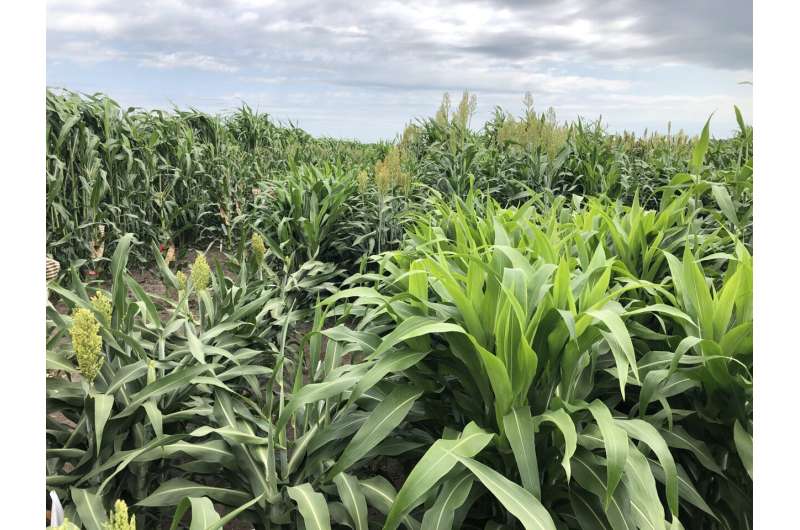This article has been reviewed according to Science X's editorial process and policies. Editors have highlighted the following attributes while ensuring the content's credibility:
fact-checked
trusted source
proofread
Weather swings bring steadier results when studying crop adaptability

Efforts to breed more adaptable crops benefit from testing locations with wide ranges of weather, according to a research team led by an Iowa State University professor.
The recent study published in the Journal of Experimental Botany is the latest work by agronomy professor Jianming Yu exploring phenotypic plasticity, the disparate ways plants respond in different environments. Better understanding the genetic and environmental underpinnings of plasticity can help scientists and breeders create hybrids tailored for their location and able to adapt to challenging conditions.
"Our research really has broad implications for climate change, sustainability and precision agriculture," said Yu, the Pioneer Distinguished Chair in Maize Breeding and director of the Raymond F. Baker Center for Plant Breeding.
To a certain degree, the study confirmed the Midwest is an ideal region for experimenting on new cultivars, thanks in part to its erratic weather, Yu said.
"Seed companies have breeding locations across the Corn Belt, and historically, we know some testing sites seem to be more successful and did not end up on the chopping block as companies have merged. There hasn't been much actual research into that. It's just been the assumption," he said. "But if you want the most variability you can get, that's a good place to be pulling data. Location matters."
The study examined data from 174 rice plants grown in nine different combinations of sites and growing seasons across Asia from 2007 to 2009 and 237 sorghum plants in nine different site-and-season environments in Iowa, Kansas and Puerto Rico from 2011 to 2016.
In prior analysis of the same data, including studies in 2018, 2020 and 2022, Yu and his colleagues looked for the environmental signals connected to plant traits. For example, the researchers established for both crops an environmental index that predicts flowering time, an analysis the new paper builds upon.
"This time we changed the focus to whether what you observe could depend on the specific examples you encounter in terms of environment," Yu said.
By comparing small subsets of data to the overall sample, an analysis that incorporated many simulations, researchers found they could accurately extrapolate with four or more environments. But the environmental mean range, a gauge of the variability of the conditions, served as an even better indicator.
"While both factors are critical, our results indicated that considerations leading to an increase of environmental mean range should be given priority in study design," said Tingting Guo, professor at Huazhong Agricultural University, a co-lead of the study.
Even two testing sites could offer accurate predictions if their environmental conditions are diverse and extreme, the researchers found. Additional simulations based on historical weather records and varying planting dates were used to show the distributions of potential environmental variability for each site.
"This offers breeders some practical guidance for resource allocation and testing site optimization," Yu said.
Yu said his research group will continue to study phenotypic plasticity, mostly by further scrutinizing existing field test results. He sees harnessing plasticity as essential to making agriculture more resilient in the face of climate change.
"We're analyzing data in different ways and from different perspectives to generate knowledge that applies to real-world decision-making," he said.
More information: Tingting Guo et al, Environmental context of phenotypic plasticity in flowering time in sorghum and rice, Journal of Experimental Botany (2023). DOI: 10.1093/jxb/erad398
Provided by Iowa State University



















